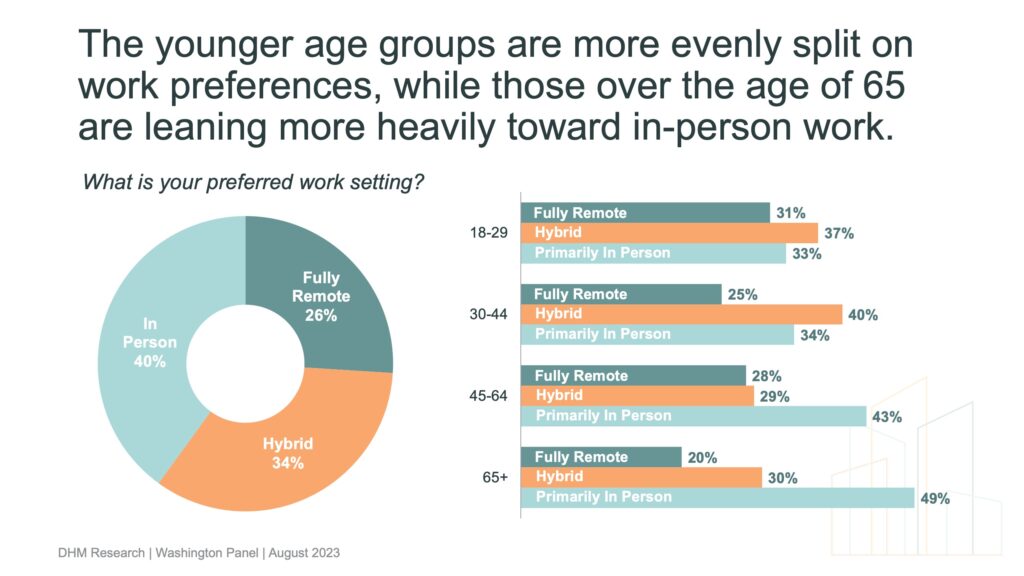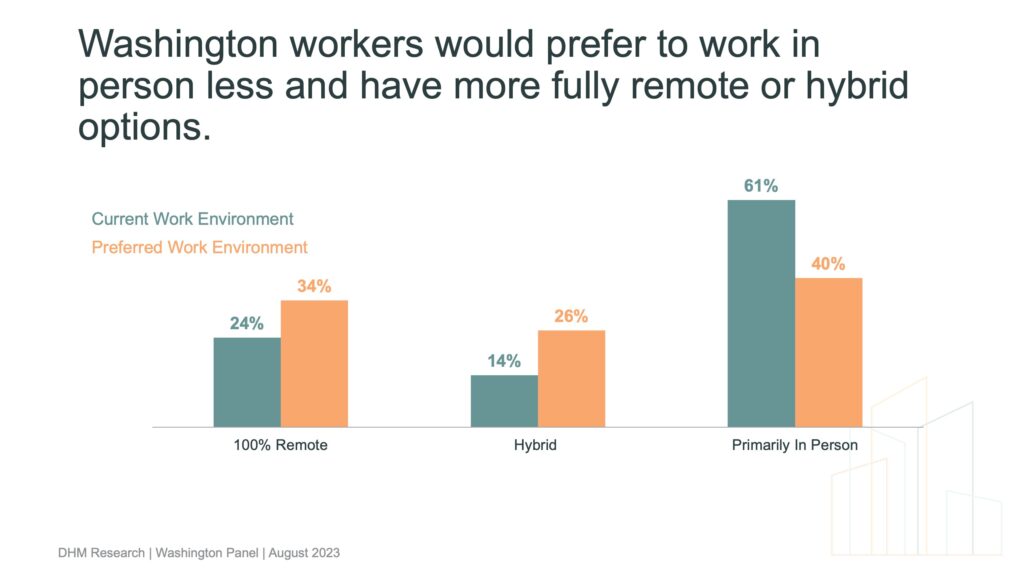DHM’s recent statewide poll dives deeper into the differences in values between different age groups in the workforce. The results indicate that as this new generation enters the working world, they aren’t as radically different from those that preceded them as their reputation might lead you to believe.
We polled voters on what job characteristics were the most important to them, and 86% agreed that a salary was an important aspect of any job. This is unsurprising considering that 6 out of 10 Washingtonians are worried about their financial situation. However, we found that those between the ages of 30 and 64 years old were more likely than Gen Z (ages 18-27) and those over 65 to be worried about their financial situation. This trend continued with those over 65 being less likely than those between the ages of 30 and 44 to consider “a good salary” to be important (78% vs 92%). Another important job characteristic for Washingtonians was skill development. When comparing age groups, our results found that those just starting their careers (Gen Z) valued this characteristic the most (84%) and interest fell as workers aged (66% for the oldest age group).
Workers under the age of 45 are more likely to find value in mental health related benefits from their employers than those over the age of 45.
Mental health support is a popular benefit among Washingtonians. When asked if workplaces have a responsibility to provide mental health support, 77% percent agreed that employers have a significant or some responsibility to provide it. Gen Z was the most supportive with 85% agreeing while those over 65 were the least likely to support it at 69%. However, the divide widened when it came to support for mental health days. Approximately 7 out of 10 workers between the ages of 18 and 44 believed that mental health days were impactful, while 5 out 10 between the ages of 45 and 64 and 3 out of 10 workers over the age of 65 agreed—indicating that younger generations put more importance on mental health related benefits than those that are older.
The remote, hybrid, in person work debate is not polarizing by age group. Besides those over the age of 65, between a quarter and a third of each age group preferred the different work settings.
On average, 26% of workers prefer fully remote, 34% prefer hybrid, and 40% prefer in person work. However, when these preferences are broken down by age group, we find that workers are very similarly split by age group for each work preference. Between 20 and 30 percent of each age group preferred to work fully remote, while approximately 30 to 40 percent of each age group preferred a hybrid work setting. The 30- to 44-year-old age group had the most support for a hybrid setting at 40%, while only 29% of those between the ages of 45 to 64 preferred a hybrid setting. Approximately a third of all the age groups preferred in person work, with those over the age of 65 being the only outlier with 49% preferring this type of work.

We also polled Washingtonians on their current work setting and a discrepancy between their preferred work setting and their current setting. This indicates that the debate around in-person vs. remote work is not necessarily due to generational differences, but a mismatch between preference and current situation. However, the oldest age group has a much stronger preference for in person work than the others.

